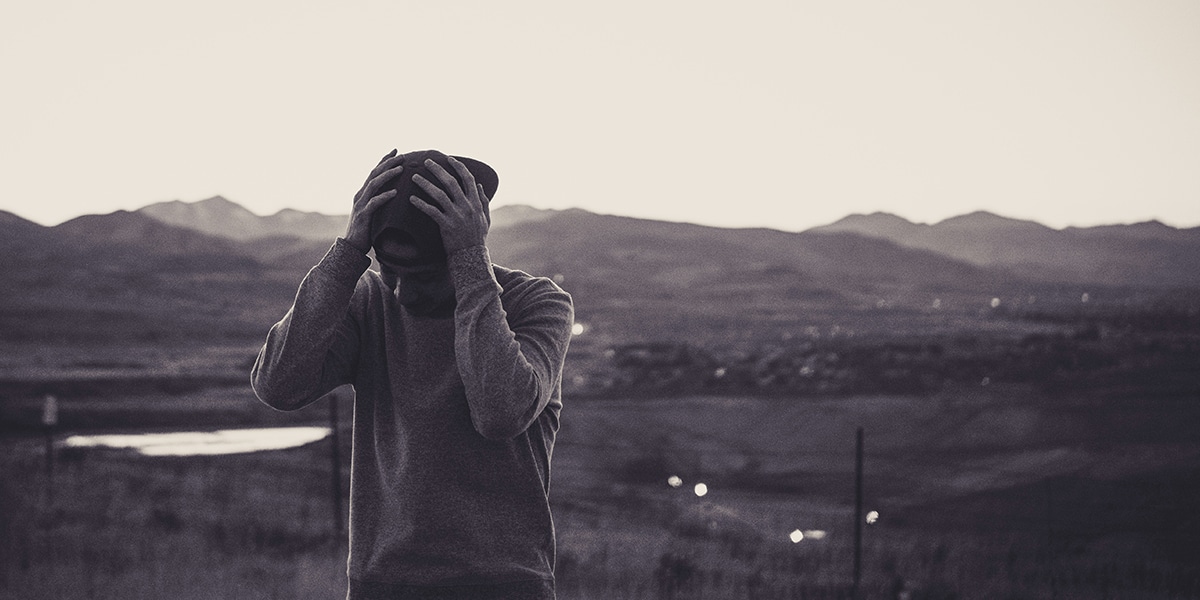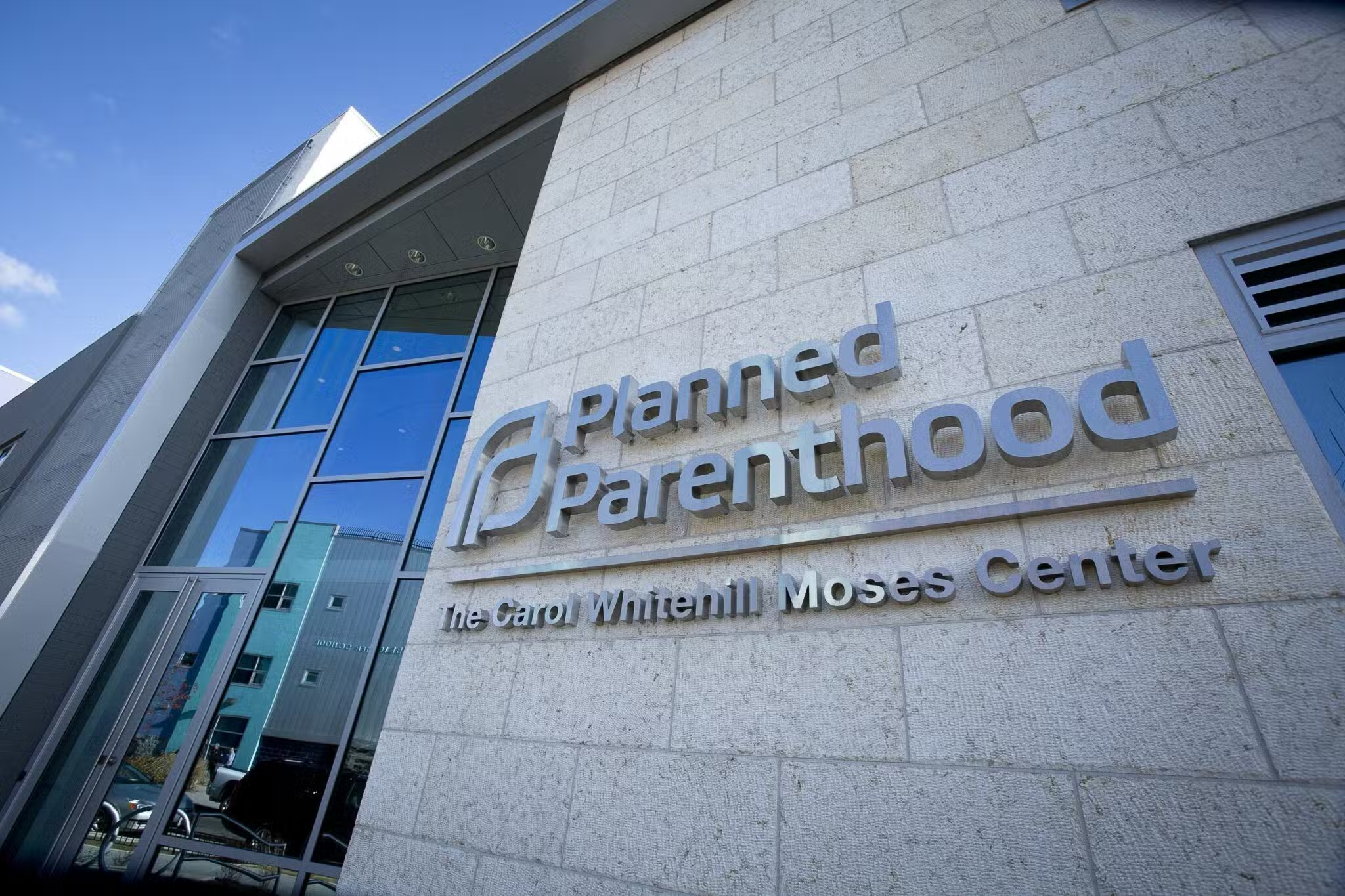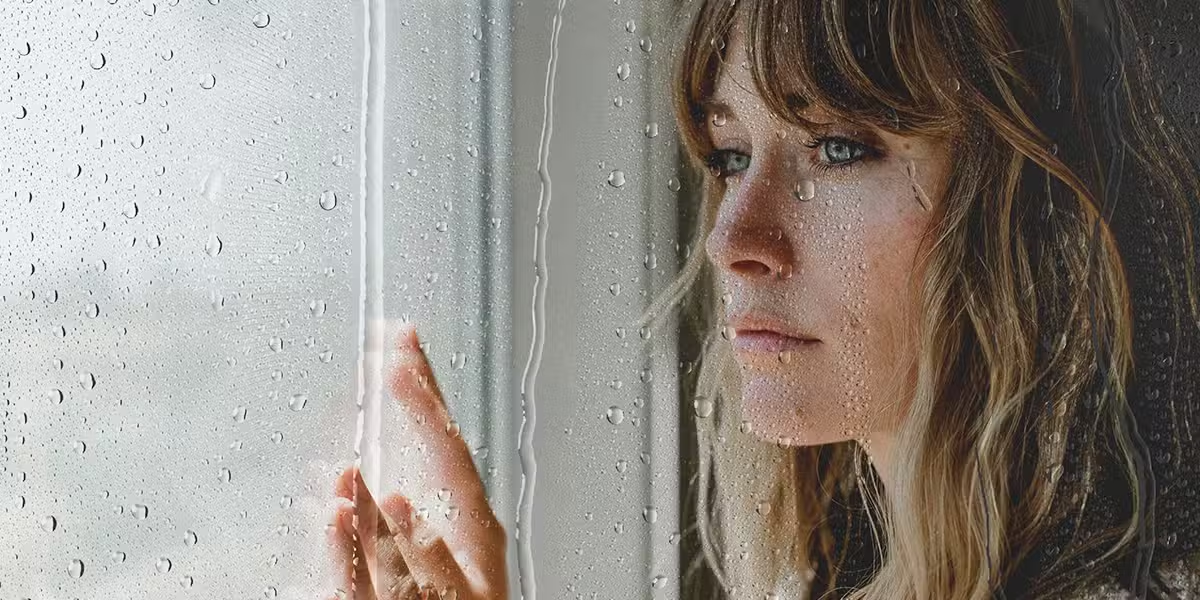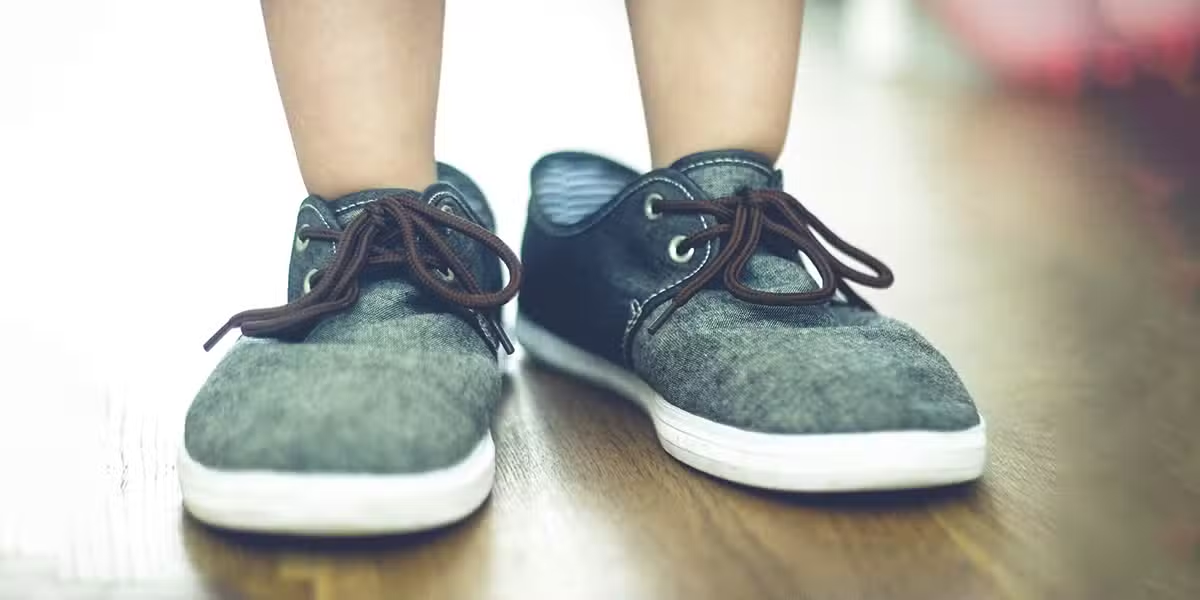Many Ukrainian students and their families have fled war and trauma. St. Nicholas Cathedral School in Chicago greets these newcomers with open arms and hearts.
The Catholic students rise to their feet in their school gym in Chicago. Clad in blue sweaters or jumpers, the 200 boys and girls face their principal, microphone in hand. “Glory be to Jesus Christ,” Anna Cirilli exclaims. “Glory be forever,” the students respond.
The next call-and-response is in Ukrainian. “Slava Ukraini” (“Glory to Ukraine!”), Cirilli thunders. “Heroiam slava!” (“Glory to the heroes!”), the students loudly reply.
For 70 of the students, their fathers and older siblings are half a world away fighting the Russians. Or they work a job in Ukraine that keeps their society functioning. Last March, barely a week or so after Russia invaded Ukraine, St. Nicholas Cathedral School (administered by the Ukrainian Catholic Eparchy of Chicago) began enrolling students who had fled their battered nation.
However young and innocent they are, their lives have been terribly upended—and close to ending. They had hunkered down underground in subway stations or parking garages to avoid the bombs. Or they made perilous journeys past shattered buildings and bomb craters. They passed through multiple nations, waiting anxiously for days at some borders, before finally making it to the United States.
They fled with their mothers and siblings. Carrying what they could hold, they unceremoniously left behind their possessions, their relatives, and any semblance of a normal childhood. Dmytro, 13, was the first to arrive at the school. Coming straight from the airport, he and his mother each lugged a single suitcase. Aghast at their dilemma, school staff hurried to a nearby Ukrainian bakery and purchased a hearty breakfast for him and his new classmates.
St. Nicholas was a most appropriate destination for the refugees. Nearly four of five students have roots in Ukraine. Nearly one in five are Ukrainian natives. Some staff speak Ukrainian, as do many parents and some students. The parish school is located in Ukrainian Village, one of Chicago’s 77 neighborhoods and a longtime landing spot for Ukrainian immigrants.
Its spires rising over the neighborhood’s attractive, tree-lined streets, the magnificent St. Nicholas Ukrainian Catholic Cathedral is modeled after the famous St. Sophia in Kyiv. The children may have left Ukraine, but they are more at home here on the North Side of Chicago, besides Ukraine, probably than anywhere else in the world.
They left behind terror and horror, destruction and death. Their lives are fraught with worry, homesickness, and the numbing sense of dislocation experienced by refugees, particularly those vacating war zones.
Many are eager to return to Ukraine. Yet emblematic of the success of the Herculean effort by St. Nicholas teachers, students, and parents to help the newcomers feel at home, the new students commonly express gratitude toward their teachers and classmates and even gratification with their forced relocation.
“I like everything here. It’s different, but I like it,” Varvara, a tall, soft-spoken, demure seventh-grade girl, says through an interpreter. “I want to stay here. I really love the United States,” she adds.
‘A Calming Feeling’
The phone rings repeatedly early this morning at the St. Nicholas school office, located up the steps just off the front door. The office belongs to Phyllis Muryn-Zaparaniuk, the school’s busy and vigilant administrative assistant. Lovingly watching her every move is the Blessed Mother: on the wall, high above her desk, is an eye-catching icon of Mary and Child.
Chatty and amiable, Muryn-Zaparaniuk converses with some callers in Ukrainian and others in English. Like others at the school, she is at home in two cultures. Decades ago, her parents attended the school, and her grandparents lived in Ukraine. The summers of her younger days were spent in Ukraine, where she improved her language skills and her knowledge of Ukrainians and their culture.
“I’m sure we’d welcome helping any nationality. But these are people of our own ethnicity,” she says.
Her office is a vortex of responsibility and remedial action, the stock-in-trade of overseeing grade school students. A stout middle-school boy with a flat-top haircut shuffles in. He conveys an air both of modest pride and baffled uncertainty. The oversized box of World’s Finest Chocolate on the office’s desk is the source of his mood. Back in his hometown in Ukraine, students do not sell chocolate to help defray the cost of education, but at Catholic schools in Chicago students do precisely that.
“He sold his first box,” Muryn-Zaparaniuk explains after he transacts his business and returns to class.
Selling chocolate is hardly the only cultural gap the new students must cross. So many people, places, and things in America are achingly strange and unfamiliar. Things their US classmates know and cherish often completely escape the Ukrainians. That lack of cultural familiarity can easily impede academic progress. Students do not have to keep up in class so much as catch up by leaps and bounds.
“My biggest problem is history class. I don’t know American history,” says Varvara, the quiet seventh-grader. “I am kind of tired all the time. There are so many things I don’t know.”
Something else makes St. Nicholas far different than school in Ukraine. “There are no Catholic grade or high schools there,” says Muryn-Zaparaniuk.
Religion, of course, is the bedrock of this school. The Hail Mary and Our Father, in Ukrainian and English, are prayed over the intercom at the start of each school day. Prayers are said before lunch. This school day, a Friday, began with Mass. Students sang hymns, prayed for peace, and listened attentively as the priest urged them to keep God at the center of their lives.
St. Nicholas School is part of St. Nicholas Cathedral, the seat of the St. Nicholas Ukrainian Catholic Eparchy. The Ukrainian Catholic Church is in an Eastern Catholic Church in full communion with the Holy See.
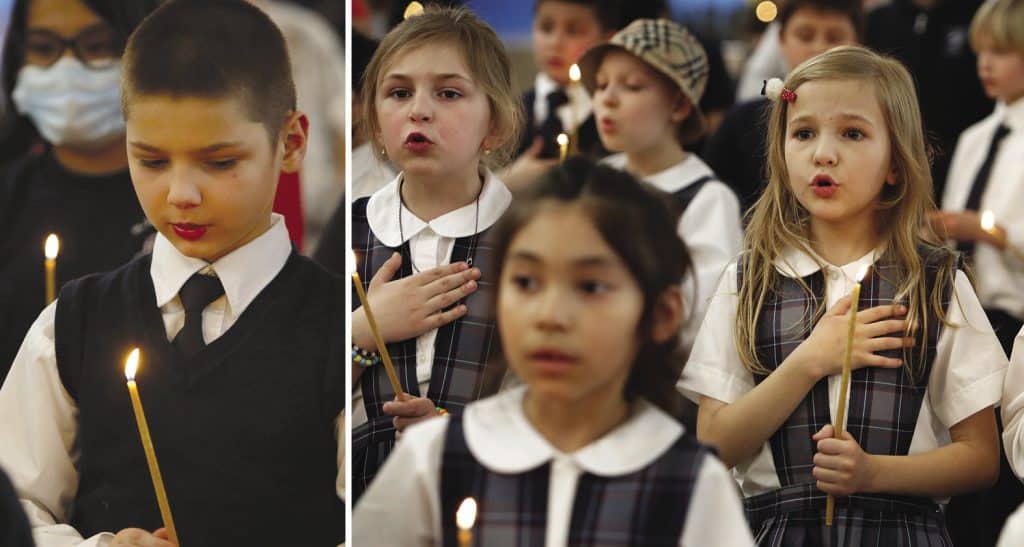
Some of the new students are Catholic. Others are Orthodox. Other Ukrainian refugee parents enrolled their children in public schools in Chicago. Those who chose St. Nicholas were fully aware of the religious component to the school.
“For the parents to give their children a Catholic education tells you what their faith means to them,” says Muryn-Zaparaniuk. “The kids serve as altar servers. The girls have joined the junior sodality. They know their prayers.”
Learning and talking about their faith and practicing it during the school day is a balm. “It’s a calming feeling to be in church and pray,” says Cirilli. “I think their participation is very heartfelt. It offers an opportunity for reflection.”
For students who months ago were alarmed at the prospect of being overrun by enemy soldiers or attacked with shells, faith is less a crutch than a blossoming of their essential identity.
“The Russian airplanes flew over our homes on bombing missions,” says eighth-grader Oksana through an interpreter. Now, instead of the menacing drone of airplanes, the soothing tone of prayer regularly fills their air. “I never prayed at school,” she says. “Something inside of me likes it. I am developing my spirit.”
Varvara is no less spiritual. “I pray a lot for my family and friends,” she says quietly. “Prayer is very important to me.”
‘Our Angels’
Within days of the Russian invasion in February 2022, hordes of Ukrainians streamed toward its borders. More than 8 million, mostly women and children, have left their nation. Last April, the US government launched Uniting for Ukraine, an expedited channel for refugees from Ukraine. First, they need a US sponsor, and then they receive temporary protected status to stay in the United States for two years. More than 150,000 Ukrainians have come to the United States.
With nearly 50,000 people of Ukrainian descent, one of the largest concentrations in the United States, Chicago was the first choice for many. The neighborhood lives up to its name in many respects. It’s dotted with long-standing, iconic Ukrainian institutions such as the Ukrainian National Museum, the Ukrainian Institute of Modern Art, and a host of Ukrainian banks, youth groups, restaurants, and the like. The language is overheard on street corners and in shops. Homes and cars display Ukrainian flags, and trees are wrapped in blue and yellow ribbons.
One steady, unchanging feature is St. Nicholas Cathedral, completed in 1915. Its 13 domes stretch 112 feet into the sky—representing Christ and his Twelve Apostles. The school was opened in 1936.
The refugees have reinforced the Ukrainian identity of the school and the entire neighborhood. Many found housing nearby. They squeezed in with a relative, a friend of a relative or friend, or simply with a sympathetic family, Ukrainian and non-Ukrainian alike.
Many left not out of a vague fear of danger but because the war was rapidly closing in on them. One mother, from Kyiv, huddled with her children in their basement for a month before leaving for Romania.
“I cannot find the words to express what it’s like when planes shake the ground and your children are praying for it to be over,” she wrote. “Saving your kids from the war—it’s because the Lord sent us angels on earth. They gave my son the opportunity to study in a less stressful environment and learn English. . . . I am waiting for my work permit. I would like to pay back or thank these people who are our angels.”
It Took a Village
St. Nicholas customarily welcomed several new families each year from Ukraine. Now it had to accommodate several dozen.
The school ramped up its services. If war in Ukraine was a full-fledged catastrophe touching every aspect of society, then St. Nicholas in Chicago needed to serve as a sufficiently resourced counterweight, a tidal wave of assistance and goods dedicated to peace of heart. It diligently leveraged the goodwill of the neighborhood, random strangers, local institutions, and church groups. It took a Ukrainian Village—a city, in fact—to raise the children above fear and want.
Days after the invasion, Cardinal Blase Cupich of Chicago visited St. Nicholas to offer his support and prayers. Catholic schools in Chicago also rallied behind the newcomers. Students from three schools attended a prayer service at the school. One of the schools was from the city’s distant South Side—St. Nicholas of Tolentine.
“We’ve been talking to our students about what is going on and praying for Ukraine every day,” Carolyn Majorowski, the assistant principal, told the Chicago Catholic newspaper. “They’re St. Nicholas too, and we wanted to support them.”
Schools stepped up in other ways. One raised funds through an out-of-uniform day. Another held a successful gift card drive.
The broader community responded to the school’s Amazon Wish List. Chicagoans, like Americans nationwide, were deeply moved by the suffering of Ukrainians, and the school was adept at drawing media attention. Its solicitation of support generated a vast array of school supplies, gift cards, and monetary donations. A clothing drive was similarly successful. Impressive piles of clothing from families and stores quickly mounted in a corner of the gym.
Tuition is $7,000 annually at St. Nicholas. Nearly all the new families could afford to pay little, if anything at all. The 70 new students meant the school had to cover nearly half a million in unpaid tuition. Donors stepped up here too. One anonymous benefactor forked over $50,000.
Also crucial to the school’s viability was the Big Shoulders Fund, a nonprofit dedicated to needy Catholic schools in the Archdiocese of Chicago. It created a special fund to help cover the added operating expenses.
Day after day, various groups and people have shown up at the school’s doors or phoned the school to offer support. The pediatric Care-A-Van, run by Humboldt Park Health, provided free shots and checkups and came prepared with Ukrainian-speaking volunteers to check the children’s vaccine records. The city’s Fresh Hubs program, which donates produce in underserved areas, assisted St. Nicholas families.
Accustomed to volunteers, St. Nicholas attracted a new cohort inspired to act by the sad plight of the uprooted families. Some were summoned by the memory of other wars or deep ties to Ukraine. Marta Kozbur, an art teacher from the suburbs who attended St. Nicholas School, volunteered at a summer camp the school held for the new students. When her mother was 7, she fled Ukraine while World War II raged. Kozbur wanted the children to know that they could hang on to their ethnic identity.
“It’s good for the kids to see that it’s not the end of the world,” she told the Chicago Tribune. “You’re not going to forget your language and culture. They need to see that it’s not OK—but it’s going to be OK.”
Another vital volunteer has been Dasha Diachenko, a public relations professional from Ukraine who relocated to Chicago. Diachenko, who does PR for the school and serves as an interpreter, knows what the students experienced: She spent 10 days in a bomb shelter. “It’s so scary. Nobody knows what war is really like until you are in it,” she says.
Nor can anyone quite understand the challenge of taking on the 70 new students. The unfilled needs of the families seem unending. St. Nicholas staff, however, soldier on. “That’s the silver lining to all we do. We know we are helping,” says Cirilli.
Overcoming Trauma
The families left the war, but the war did not leave them. When a tornado siren shrilled throughout the neighborhood, the children shrieked, not sure what was happening. Early on, even the loud school bells startled the newcomers. “You saw the kids do this,” explains Muryn-Zaparaniuk, crossing her arms across her chest.
This is not a warts-free fairy tale. War exacts a toll, especially on the young and innocent. The new students cried. They flashed anger. They even fought.
The students’ distress was reflected in art class. They inevitably drew pictures of bombs and destroyed buildings. They also only halfheartedly tried to be good students. “There’s been some resistance to learning English,” says Cirilli. “They feel if they learn English, it means they will be here for a while.”
The school provided counselors to help the children deal with the lingering trauma. They came on a regular basis. Cirilli patiently met with parents dismayed at their children’s uncharacteristic outbursts.
“They do act out. The parents are distressed. ‘Why is my child doing this? They didn’t do this in Ukraine,’” recounts Cirilli. “I’d say: ‘Well, let’s talk about it. We love them. You love them.’ We try to keep encouraging a dialogue.”
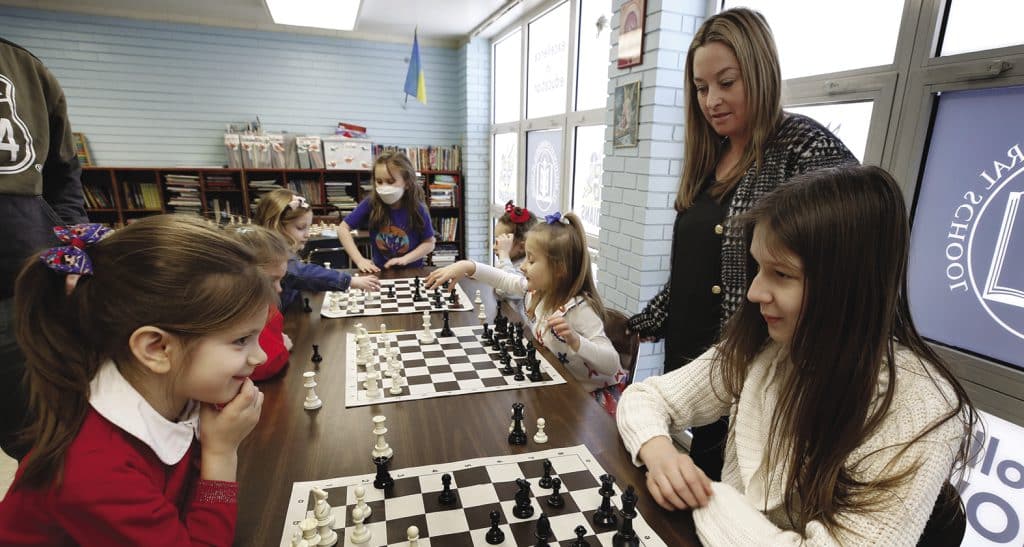
The school’s religious character has been a definite asset in mitigating unwanted behavior. “We tie it back to the teachings of Christ. That helps smooth out the resistance to the experience,” says Cirilli. “To love one another is what Jesus taught. That is what we are trying to do here.”
Counselors are needed today only occasionally. The artwork has become decidedly less grim. The longtime students at St. Nicholas have stuck by their new classmates, and their friendship and support have paid dividends. “You don’t see separate groups. You see them together, laughing and talking,” says Muryn-Zaparaniuk.
Deanna Wruskyj-Hoefle, a teacher with a first-grader at the school, concurs. “Last year we saw more breakdowns. They’d cry. They miss their friends, their fathers, their home,” she says. She’s witnessed the effort by longtime students to make life easier for the newcomers. “I had an American-born student answer a question in Ukrainian. I said, ‘You don’t have to do that.’ He said he wanted to. That was so sweet.”
One of those students who tries hard to help is Sophia, an energetic seventh-grader. Today she’s hanging out with a quiet boy from Ukraine. “I have a lot of new friends,” she says with preternatural self-assurance. “My sister came here from Ukraine. She told me how hard it was for her.”
A Protected Place
Today seven members of the esteemed Lyric Opera Orchestra gather in the gym to play a free concert for the students. The gym is festooned with homemade paper banners: “Say No to War,” “Hands off Ukraine,” and “Pray for Ukraine.”
The whole school is here. The students sit with their grade. It’s impossible to tell who is American and who came from Ukraine.
The several dozen children in the school choir begin the festivities with a Ukrainian patriotic song popular long ago. “It was when we were fighting for our freedom 100 years ago. You see, history repeats itself,” the middle-aged choir director explains to all.
The Lyric Opera musicians sit and play on the edges of the center jump circle on the gym basketball court. Several talk briefly to the student body. “Do any of you play the clarinet?” the clarinetist asks. No one raises their hand. But the French horn player knows a surefire way to connect with them. He blasts the distinctive notes from the familiar Star Wars foghorn-like signature tune. Nearly every student grins or reacts viscerally.
Near the end of the event the professional musicians play the Ukrainian national anthem. Unsurprisingly, it’s a worthy rendition, superbly played. What is noteworthy is the full and hearty participation of the children. They rise, place their hands on their hearts, and sing the anthem with spirit and gusto.
The students quietly amble back to their classrooms, passing beneath icons and images of Jesus, Mary, and the saints, silent but eternally watchful.





